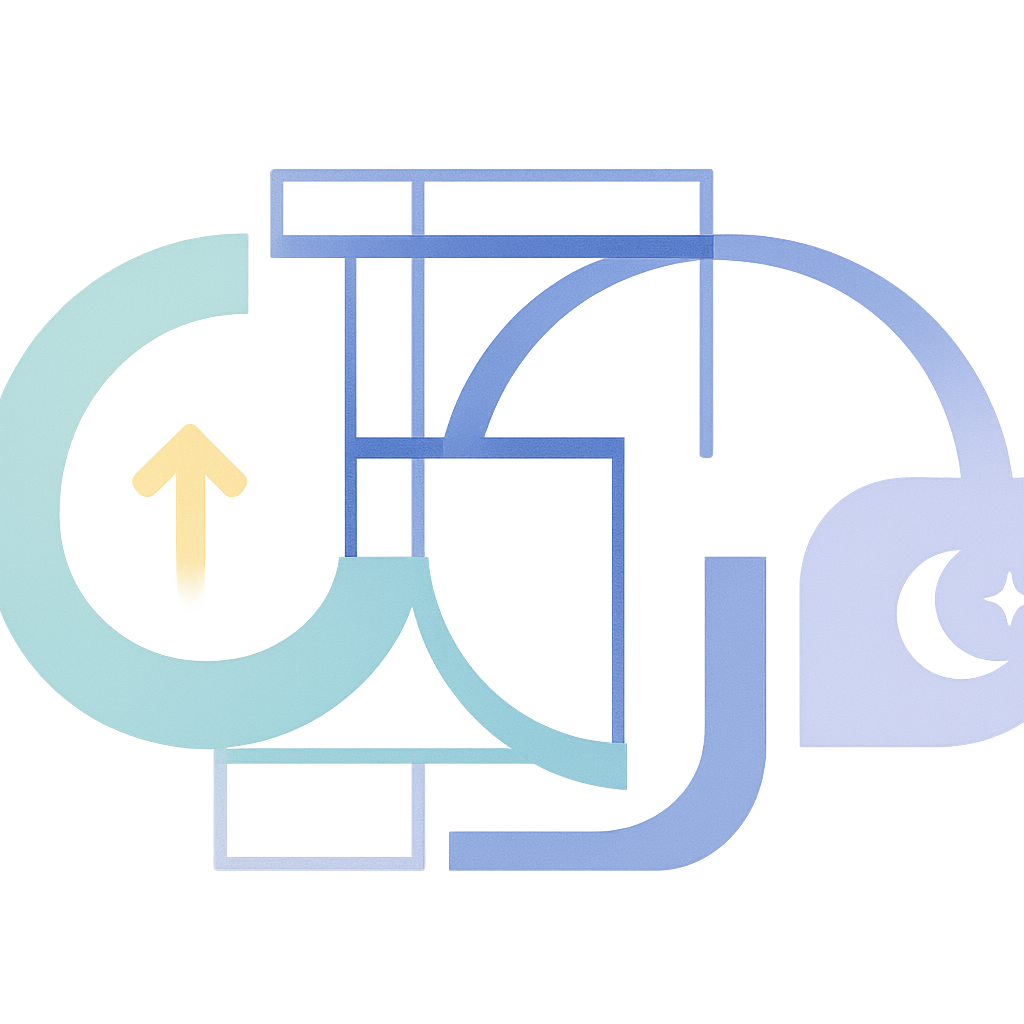The ADHD Daily Framework: Building Your Scaffolding for Success
For the ADHD brain, the right routine isn't a prison—it's a scaffold that supports your freedom to focus.
The ADHD brain has an inconsistent internal structure. Creating an intentional external structure through routines compensates for this by reducing decision fatigue, establishing helpful triggers, and creating momentum throughout the day.

1Morning Activation Routine (MARs)
Components of an Effective MAR:
- Physiological Kickstart (5-10 min): Movement immediately after waking activates your brain's dopamine system. Options: light cardio, stretching, yoga, brief walk (ideally outdoors).
- Mindful Priming (2-5 min): Focused breathing or meditation to activate your prefrontal cortex. Options: breathing exercise, guided meditation app, or simple silent focus.
- Priority Preview (5-10 min): Review your day. Check calendar, identify 2-3 "must-complete" tasks, and visualize successful completion.
Implementation Tip: The order matters. Do the physical movement first to wake up your brain, then the mindful priming to focus it, then the priority setting when your executive function is online.
2Structuring Your Workday
Energy-Matched Blocks
Schedule your day in 60-90 minute blocks based on your energy patterns:
- High-Focus Blocks: Complex problem-solving, creative work, strategic planning.
- Medium-Focus Blocks: Emails, calls, standard client work.
- Low-Focus Blocks: Administrative tasks, routine updates, learning/passive consumption.
Structured Breaks
5-10 minute breaks between blocks for physiological reset:
- Movement (quick walk, stretching).
- Hydration and small, protein-rich snack if needed.
- Brief dopamine-boosting activity (music, social connection, nature).
Caution: Avoid social media or email during breaks—these can pull you into hyperfocus on the wrong things.
Task Transition Protocol
- Complete a clear stopping point on current task.
- Document next steps for when you return to it.
- Take a micro-break (2-3 minutes) between tasks.
- Review objectives for the next task before starting.
Implementation Tip: Use visual timers (like Time Timer) to make time passage tangible. Set alarms not just for meetings but for transitions between focus blocks.
3Evening Closedown Routine (ECRs)
Components of an Effective ECR:
- Workday Completion (5-10 min): Process any lingering emails or messages, update project status and task lists, capture any open loops or ideas for tomorrow, clear your workspace physically and digitally.
- Tomorrow Mapping (5 min): Identify 1-3 priority tasks for tomorrow, review calendar and prepare for meetings, gather any materials needed for morning work.
- Wind-Down Ritual (20-30 min): Physical activity (light exercise or stretching), screen reduction (switch to night mode or put devices away), relaxing activity unrelated to work.
Implementation Tip: The evening routine is often the hardest for ADHD entrepreneurs to maintain consistently. Start with just the Tomorrow Mapping component (5 minutes) and build from there.
4Flexibility and Consistency
- 80/20 Rule: Aim to follow your routine 80% of the time—this provides structure without creating pressure for perfection.
- Minimum Viable Routine: Identify the core elements you'll protect even on disrupted days.
- Routine Recovery Protocol: Have a simple process for getting back on track after inevitable disruptions.
- Quarterly Refresh: Revisit and adjust your routines every 3 months to prevent boredom and maintain relevance.
5Your Daily Framework Template
Fill in each section with specific activities and times that work for your unique needs. This is a personal tool, so tailor it to your life and business.
Try The Interactive Builder
📋Daily Framework Builder
Build a flexible daily routine with our interactive tool.
6Key Takeaways: Daily Framework
Core Principles for ADHD-Friendly Routines
- External structure compensates for inconsistent internal executive function.
- Morning Activation Routines (MARs) prime the brain for focus and productivity.
- Energy-matched work blocks optimize performance throughout the day.
- Task Transition Protocols help maintain momentum and reduce context-switching costs.
- Evening Closedown Routines (ECRs) prepare for a smoother next day and better sleep.
- Flexibility and consistent review are key to maintaining effective routines long-term.
